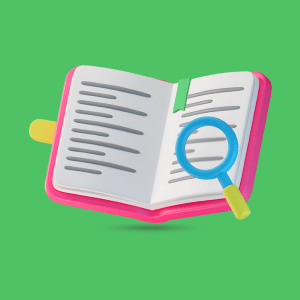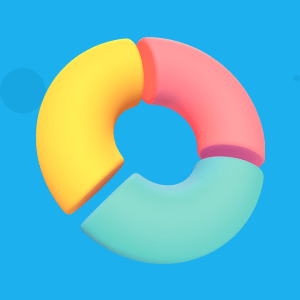Effective learning
Table of Contents
What is effective learning? Well, that’s the million-dollar question, isn’t it?
Every educator, corporate trainer, instructional designer, and learner strives for effective learning. But in many instances, it remains out of reach and clouded in confusion.
A thorough understanding of what is effective learning requires combining cognitive and psychological knowledge with a healthy dose of compassion. Humans are complex beings, so effective learning is not a simple recipe that one can perfect and follow repeatedly. Each learner requires a unique blend of approaches.
Instead, think of effective learning as a set of tools that can be utilized to build customized learning experiences and training paths. While it is impossible to know every educational situation you will encounter, you can be confident that a well-stocked toolbox will provide you with all the engaging elements and informational formats you need for effective learning in any educational environment.
In this post, you will find answers to the following:
- What is effective learning?
- Why does effective learning matter?
- What prevents effective learning?
- How can you promote effective learning?
What is effective learning?
To answer what is effective learning you must first understand what is learning. And defining learning is trickier than it sounds. Every educator or training program will have different learning outcomes that they seek, however, rarely do desired learning outcomes get explicitly defined. Even in educational research, there is a lack of clear definition for the term “learning.” Learning has functional, behavioral, psychological, and even genetic implications that must be considered when determining what learning is and how it can be effective. In essence, learning can be generally defined as “a process that leads to change, which occurs as a result of experience and increases the potential for improved performance and future learning.”
Let’s break down each component for a more thorough understanding:
- Process: The emphasis on learning as an ongoing continuum is crucial for setting expectations around learning outcomes and designing learning experiences that build on one another.
- Leads to change: Most often, learning shows up as a change in behavior, critical thinking abilities, and application of new knowledge to novel situations.
- Result of experience: This is where educators and instructional designers focus their craft. The experiences designed to promote learning should be carefully constructed for effective results.
- Increase in potential: This focus on “potential” reminds educators and instructional designers that their work is never static. Each learning experience is part of a dynamic whole that makes up a learner’s lifetime set of experiences — both formal and informal.
- Improved performance: The neutral language of “performance” keeps this definition applicable across all disciplines. Performance will look different for various careers and industries, but all improvement should be measurable within disciplinary standards.
- Future learning: Focus on the ongoing nature of learning as a lifelong process. Today’s learning experiences serve as the foundation for tomorrow’s growth.
With this definition in mind, measuring the effectiveness of learning becomes multi-faceted. Effective learning occurs when the following takes place.
Student performance
An outcome-based measure of effective learning shows up in student performance. This can include convergent measures of performance, such as standardized tests and quizzes, as well as more divergent measures, such as multimodal projects and creative works.
Self-regulated learning
Learners are more likely to be engaged in effective learning in an environment conducive to self-regulation. Examples include self-paced courses that learners can do on their own time, goal-setting sessions that allow the learner to determine their own learning outcomes, or assessments that allow the learner to gauge their level of knowledge.
Long-term retention
When learners can retain and access information over long periods of time, it is indicative of effective learning processes. Long-term retention is more likely to occur when the learner cares about the material and sees value in learning it. These benefits should be established early and often in a training session.
Multi-faceted application
When learners can apply information and knowledge in various situations across different disciplines, they are demonstrating the effectiveness of the learning strategies they’ve used along the way. This means offering repetitive application opportunities to allow the learner to practice and providing real-world examples from multiple perspectives.
Why does effective learning matter?
As the above explanation of what is effective learning makes clear, there is no simple way to measure learning effectiveness in the moment of delivery. The process of learning is a long and complex one that builds over repeated exposure to ideas in different environments.
This can make clear theories of pedagogy difficult to define and support. Any educator who tries to keep up with the latest pedagogical advice on teaching methods likely has a horror story or two about the challenges of following conflicting advice or frustration over fads that have come and gone during their tenure.
Rather than rely on any overly-specific recommendation, instructional designers and educators will be better served by a more foundational understanding of effective learning. These are rooted in sound principles that have cross-disciplinary applications.
Essentially, understanding what works allows educators and instructional designers to stock a toolbox full of effective strategies and approaches that they can mix and match as needed depending on the learner, topic, and environment.
What prevents effective learning?
The barriers to effective learning outcomes have varied sources. Some are personal to the learners’ individual psychologies. Others can be environmental. Understanding common barriers can provide educators and instructional designers with the tools necessary to build robust learning experiences that meet a wide variety of needs and avoid misconceptions about what makes learning effective. Here are some of the most common barriers.
Individual barriers to attention and focus
Learners come into an educational environment with a variety of factors already in place. This may include cognitive and neurological differences like ADHD, psychological challenges like past educational trauma, or workplace distractions that can be challenging to overcome. Educators and instructional designers must consider what their learners are experiencing in order to address these barriers and promote optimal focus.
Environmental barriers to attention and focus
Poorly designed learning environments—whether in-person or virtual—prevent effective learning. Poor sound quality, inadequate lighting, glitchy technological delivery, and other environmental factors can create a disconnect between what is being taught and what the learner is taking in.
Gaps in assumed knowledge
Learners are expected (explicitly or implicitly) to have relevant background knowledge when they enter a learning environment. This “assumed knowledge” can be inaccurate creating gaps that can leave learners feeling confused, frustrated, and unable to move forward in gaining new knowledge. Consider the Transtheoretical Model of Change when determining the knowledge and learning readiness level of your audience. For example, a learner who is in the “pre-contemplation” stage of change may need foundational knowledge just to understand the basics versus a learner in the “action” stage who may be very knowledgeable on the topic already and be ready for actionable steps.
Superficial coverage
It is not enough to simply “cover” a topic or check understanding via rote memorization. Learning experiences that fail to provide depth and opportunities to explore knowledge in meaningful ways are likely to be ineffective. To avoid superficial coverage, find ways to provide real-world examples and opportunities to apply what is being learned.
What promotes effective learning?
What is effective learning supported by? Luckily, educators and instructional designers have principles at their disposal to address all of these barriers and create differentiated and robust learning environments that promote effective learning. Here are some strategies for effective teaching:
Meet students where they are
Effective teaching isn’t one-size-fits-all. Educators need to avoid following preconceived ideas of who their learners are and instead allow the learners to express who they are and adjust from there. This means adapting the learning experience to fit different audiences and using agile teaching methods. Be prepared to address unforeseen knowledge gaps or a variety of questions that may arise.
Address different learning experiences
Offering a variety of formats in the learning experience provides learners with multiple paths to the same information. An effective learning environment will rely on a combination of:
- Direct instruction
- Self-directed learning opportunities
- The application of materials across multiple contexts
Engage in active learning
Learners who are given opportunities to actively engage with information are more likely to have effective learning outcomes. There are many ways to achieve this such as virtual chat or in-person discussions, hands-on activities, or questions that challenge the learner to choose the best course of action.
Let learners promote their own learning
Learners do best when they have a sense of ownership and autonomy during the learning process. Keeping lecture materials short and punctuating them with opportunities for practice is one example of a strategy that promotes autonomous learning. In addition, providing opportunities for self-direction and the application of critical thinking to relevant problem-solving tasks will give learners a sense of accomplishment that makes for more robust learning outcomes. For example, you could create a hands-on activity that allows the learner to analyze and apply the material to their specific role or professional development showcasing how this information can benefit the learner. .
Craft collaborative learning opportunities
What is effective learning without other learners? Learners who can work alongside other learners to grapple with tough concepts, discuss ideas as they develop, and share in the student learning experience often have more positive outcomes. These collaborative experiences facilitate real-life situations and are often some of the most relevant for professional development training.
Build in repetition
Learners should not be expected to take in information once and be able to recall or apply it effectively. Opportunities for re-learning need to be built in through repetitive activities that revisit already-covered knowledge without seeming redundant. This can come in the form of mentor-style check-ins, sporadic post-training refreshers, or explanations of a concept from multiple perspectives.
Provide consideration for learner well-being
Most of the discussion on effective learning strategies is around the actual material and content, but the educational relationship also depends on compassion for learners’ external and internal well-being. Learners who are struggling with personal issues outside of the learning environment or those with learning challenges, including disabilities and language barriers, must have their needs addressed through compassionate, accessible design. Also, consider the workload and schedules of employees to determine the most convenient learning environment for them.
There are many ways to craft environments that promote effective learning. A well-designed learning management system (LMS) is one of the most common and robust tools available to modern-day educators and instructional designers. These platforms provide the tools for differentiated delivery and individualization that put all of the most effective learning techniques into place. A thorough and well-designed LMS provides a meaningful toolbox that gives any educator or instructional designer an excellent starting place to create effective learning experiences. For more information about effective learning and the various tools at your disposal, visit our glossary.







